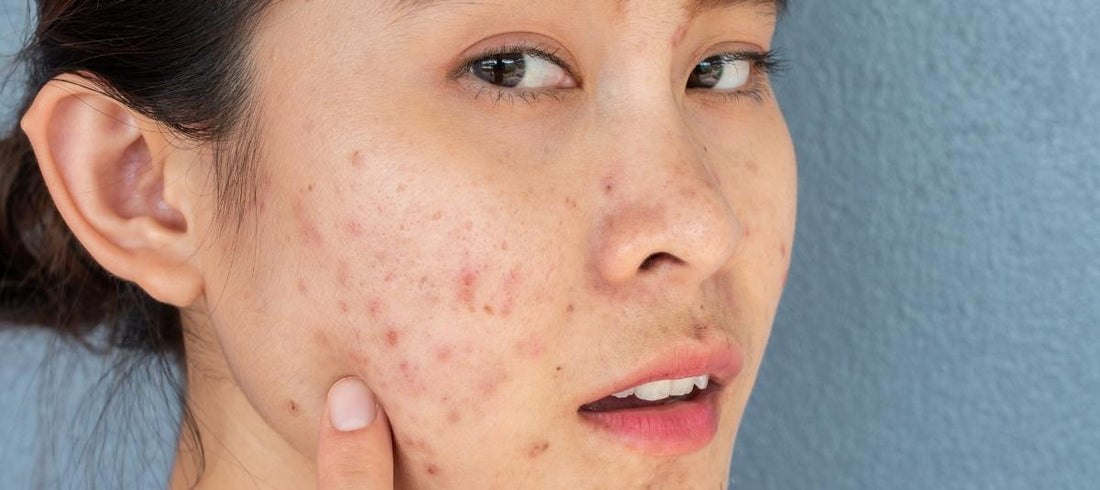The appearance of acne often leads to new skin issues in the form of acne scars. There are two common types of acne scars that are often difficult to fade: post-inflammatory erythema (PIE) and post-inflammatory hyperpigmentation (PIH).
Both types of acne scars have distinct appearances and require different approaches for treatment. To understand the proper treatment methods, it's important to first grasp the differences between PIE and PIH acne scars.
Read on to learn more about the differences between these two types of acne scars!
Differences Between Post-Inflammatory Erythema (PIE) and Post-Inflammatory Hyperpigmentation (PIH)
Here are the differences between PIE and PIH acne scars:
1. Post-Inflammatory Erythema (PIE)
The common cause of PIE acne scars is cystic acne. However, any skin inflammation condition, such as dermatitis or sunburn, can also be a cause.
When the skin experiences injury or irritation, inflammation occurs, leading to the appearance of redness, hyperpigmentation, or brown spots on the skin.
The process of PIE acne scars is related to interrupted blood flow during the inflammation stage. During inflammation, dilation or damage to the skin's blood vessels can also cause the appearance of red or pink marks on the skin.
The main difference between PIE acne scars and other types of acne scars is the absence of permanent scar tissue after the skin heals. PIE acne scars tend to fade and disappear on their own over time. However, the healing process can make the skin appear thinner.
There are various effective treatment options available to reduce or eliminate these scars more quickly. You can read recommendations in the following article: "Top 5 Most Effective Acne Treatments Available at Pharmacies".
2. Post-Inflammatory Hyperpigmentation (PIH)
In contrast to PIE acne scars, PIH acne scars develop when the skin experiences injury or irritation, such as scratches, rashes, or inflamed acne. During the skin's healing process, excessive melanin production occurs, causing the skin to become darker than its original color.
Many people with acne issues experience PIH acne scars. These scars not only appear as large spots or black spots but can also cause persistent hyperpigmentation even after the acne has healed.
The larger and more inflamed the acne, the larger and darker the PIH acne scars that may form. Additionally, squeezing pimples increases the risk of PIH due to increased inflammation.
Other causes of PIH acne scars include:
Sunburn.
Chemical peels.
Dermabrasion.
Laser resurfacing.
Differences in Treating Post-Inflammatory Erythema (PIE) and Post-Inflammatory Hyperpigmentation (PIH) Acne Scars
Acne can leave scars, whether they are PIE or PIH acne scars. Treating acne early can help the skin recover better. Even if acne scars have already formed, there are several treatments you can consider.
PIE and PIH acne scars require different approaches to treatment. Here's how to address them:
1. Treating Post-Inflammatory Erythema (PIE) Acne Scars
Some ways to treat PIE acne scars include:
Topical hydrocortisone, to reduce inflammation.
Topical vitamin C, to reduce erythema due to UVB rays and brighten the skin.
Niacinamide, to reduce inflammation and help the skin retain moisture.
Sunscreen, to prevent further redness, irritation, and pigmentation.
Additionally, you can use natural treatments as listed in the article: "Note This, Here Are 15 Natural Ways to Get Rid of Acne".
2. Treating Post-Inflammatory Hyperpigmentation (PIH) Acne Scars
Whatever treatment option you choose, understand that improving PIH acne scars takes time. PIH scars usually fade on their own, but it can take up to two years for them to completely disappear.
Here are skincare treatments you can use to address PIH acne scars:
Alpha hydroxy acids (AHAs). These help accelerate natural skin exfoliation, which can help improve the appearance of PIH.
Hydroquinone. This ingredient works by blocking the enzyme responsible for producing melanin, thus brightening the skin.
Topical retinoids. These work by accelerating cell turnover rate. Additionally, retinoids can exfoliate the skin to help fade PIH.
Azelaic acid. This medication works by reducing inflammation and accelerating cell turnover rate.
Additionally, learn about Effective Acne Medications Recommendations.
The Importance of Using Sunscreen While Treating Acne Scars
According to research from the Indian Journal of Dermatology, sunscreen use plays a crucial role in preventing and treating both PIE and PIH acne scars.
UV rays are a significant factor that can cause hyperpigmentation. There are many benefits to using sunscreen daily, including protecting the skin from damage.
Moreover, prolonged exposure to sunlight can make it difficult for skin inflammation to heal.
Using sunscreen will protect PIE and PIH acne scars, preventing their condition from worsening.

Post a Comment for "Post-Inflammatory Erythema (PIE) and Post-Inflammatory Hyperpigmentation (PIH), Here's the Essential Difference You Need to Know"